Map Reveals How America Remains Racially Segregated

By:
While the U.S. outlawed racial segregation in 1964, the country’s ethnic landscape didn’t quite change overnight. The residual effect of discriminatory policies is especially apparent in major cities, where many communities remain racially divided.
Using data from the 2010 U.S. Census, former demographic researcher Dustin Cable created a map that offers a detailed illustration of racial segregation in modern America. From afar the U.S. seems fairly homogenous, but if you look closely, the evidence of segregation is clear.
Here’s a map of the racial distribution in the U.S.
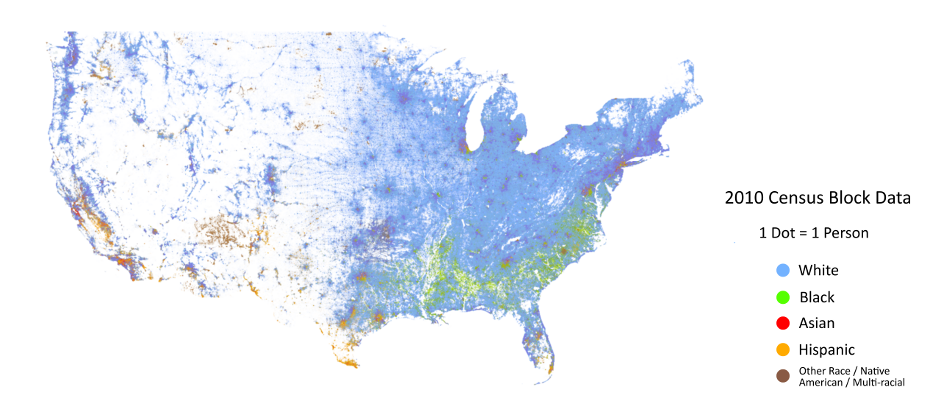 Cooper Center - coopercenter.org
Cooper Center - coopercenter.org
For each person living in the U.S., Cable assigned a color-coded dot that represents the individual’s race and ethnicity. Shades of purple, teal, and other colors are the mix of different races and can be a measure of racial integration in a particular area. Exact addresses aren’t included in the census, so the placement of the dots was based on the closest geographic identifier available, a unit known as the census block. From a national and state perspective, most major cities appear to have a heterogeneous concentration of different races, but the divide reveals itself the closer you zoom.
At a distance, Minneapolis, Minnesota, looks integrated.
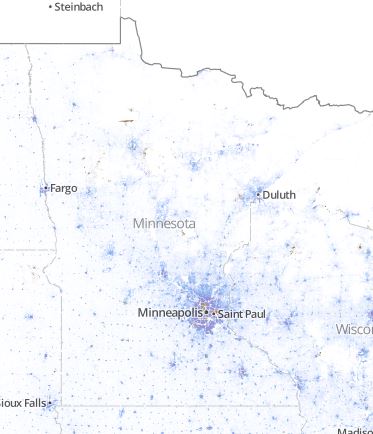
But at the city-level, racial segregation comes into focus.
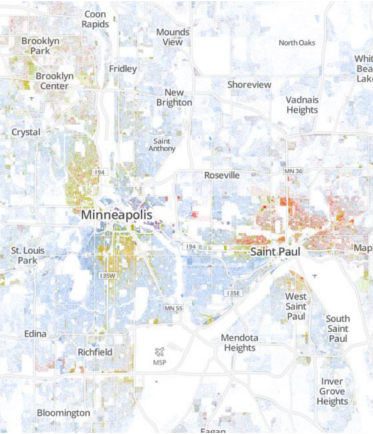
The same thing happens when you look at Chicago.
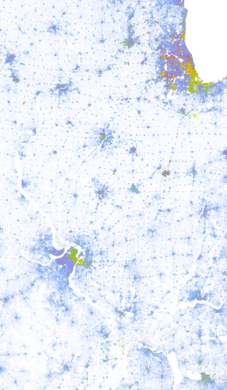 Cooper Center - coopercenter.org
Cooper Center - coopercenter.org
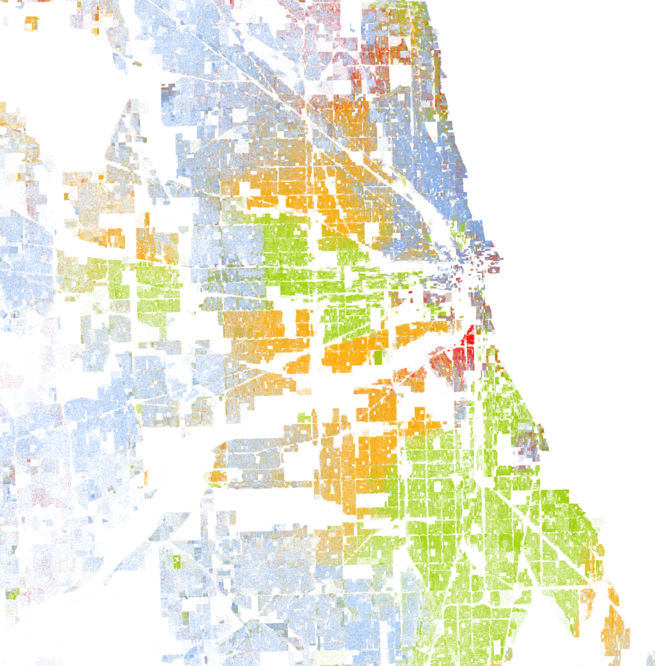 Cooper Center - coopercenter.org
Cooper Center - coopercenter.org
And New York
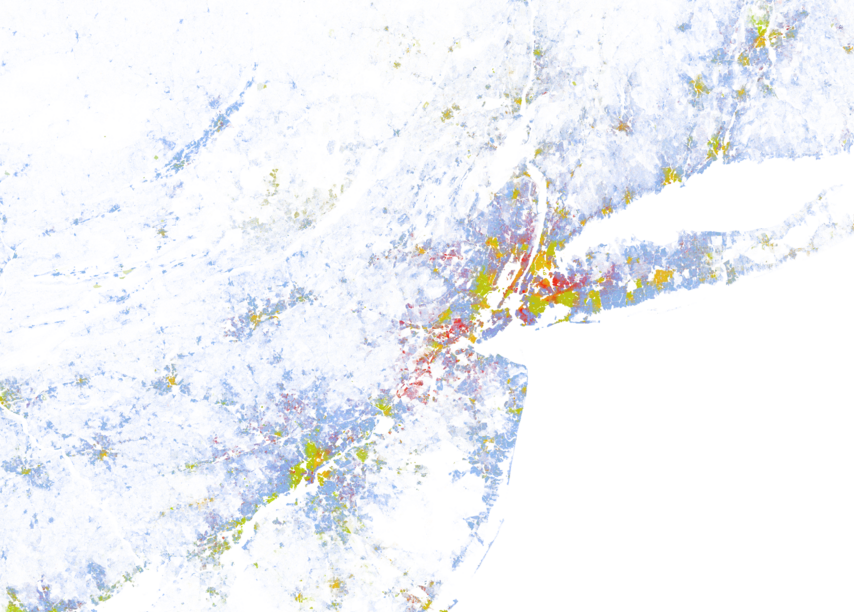 Cooper Center - coopercenter.org
Cooper Center - coopercenter.org
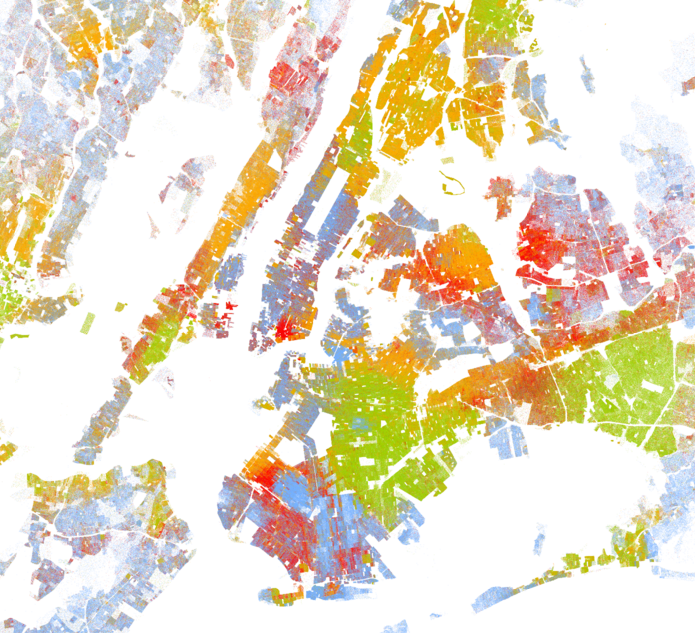 Cooper Center - coopercenter.org
Cooper Center - coopercenter.org
And Los Angeles
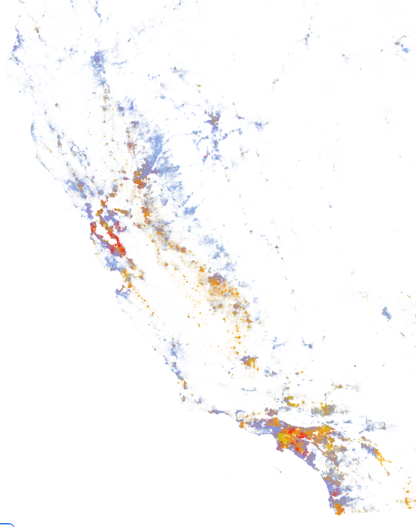 Cooper Center - coopercenter.org
Cooper Center - coopercenter.org
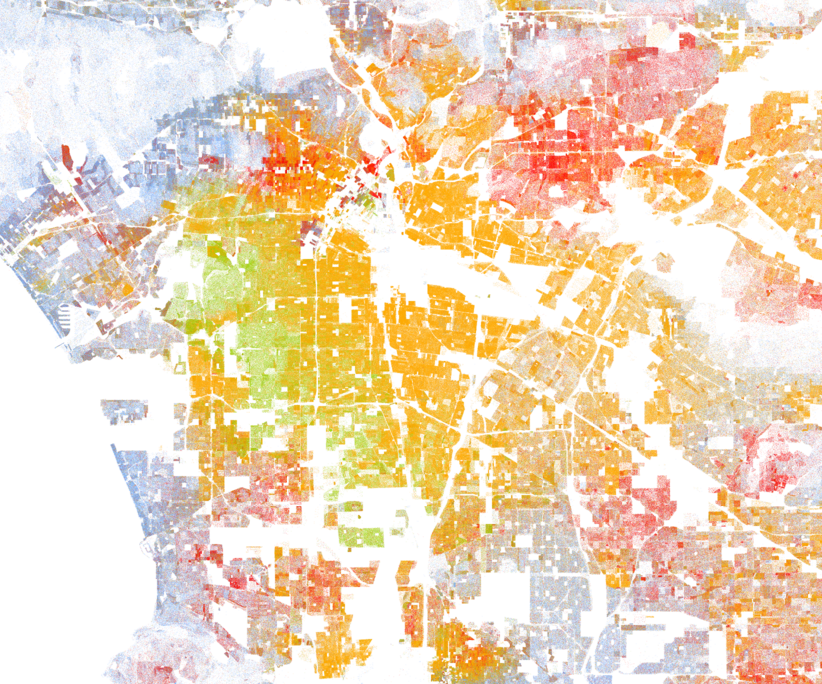 Cooper Center - coopercenter.org
Cooper Center - coopercenter.org
And Houston
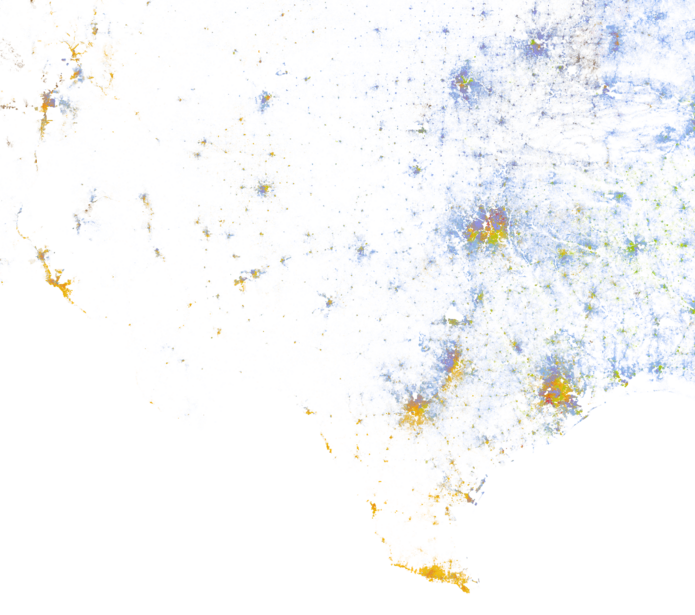 Cooper Center - coopercenter.org
Cooper Center - coopercenter.org
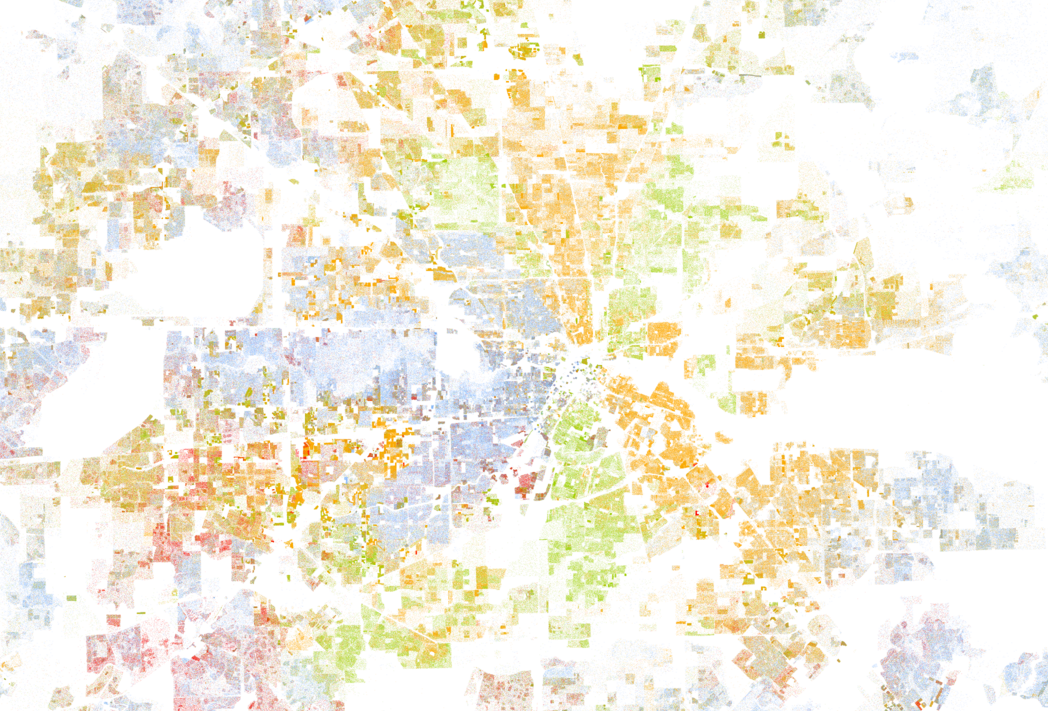 Cooper Center - coopercenter.org
Cooper Center - coopercenter.org
You get the point. There’s often a misperception that the federal ban on racial segregation effectively eroded racial barriers in the U.S. when the fact of the matter is, we’re far from a fully integrated society.
Why is America still racially segregated?
Numerous factors have contributed to the racial segregation of U.S. cities, but scholars say that it is primarily the product of discriminatory laws that left minority communities, especially Black communities, at an educational and socioeconomic disadvantage. Racist federal housing policies from the 1930s were especially impactful, as The Atlantic's Ta-Nehisi Coates explains in his award-winning 2014 feature, " The Case for Reparations." He wrote:
"With segregation, with the isolation of the injured and the robbed, comes the concentration of disadvantage. An unsegregated America might see poverty, and all its effects, spread across the country with no particular bias toward skin color. Instead, the concentration of poverty has been paired with a concentration of melanin. The resulting conflagration has been devastating."
Policies excluding Black people from affordable housing options in American suburbs offer one explanation as to why there's a greater concentration of Black people in urban areas, for example. Black people have also been historically denied home and business loans, a trend known as redlining. Rates of homeownership are significantly lower for Black people, which has contributed to the racial wealth gap because housing investments are a major source of income and home values have steadily increased over the decades, the Huffington Post reports.
But the trend isn't just apparent for for low or working class families. According to a report by the Institute on Race and Poverty, a Black family that earns $157,000 a year is less likely to qualify for a prime loan than a white family that earns $40,000. "White families borrow a super amount of money to move into these white enclaves. Black people, even if they saw these places and were shown them by realtors, they can’t get the jumbo loans," Myron Orfield, director of the Institute for Metropolitan Opportunity at the University of Minnesota, told CityLab.
Of course, there is no one-size-fits-all explanation for the lingering racial segregation that exists in the U.S. But to deny that the country remains segregated is to deny that data, which is why Cable's map serves as an effective illustration of racial disparities in America.
